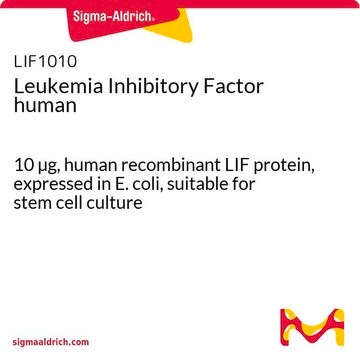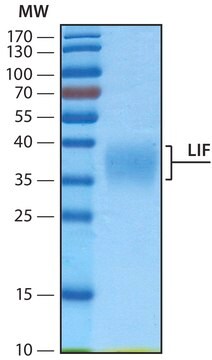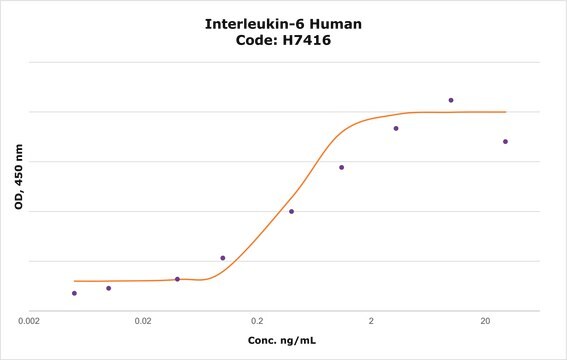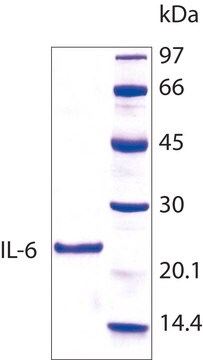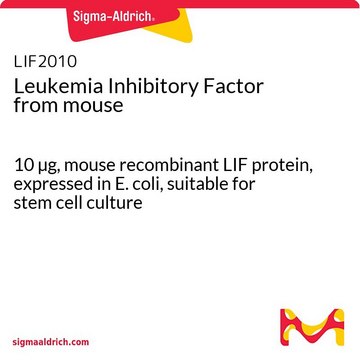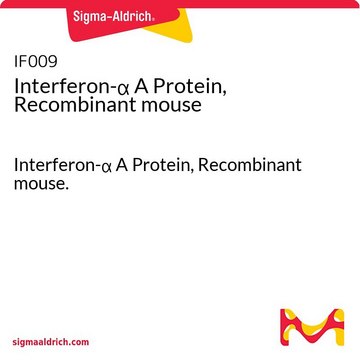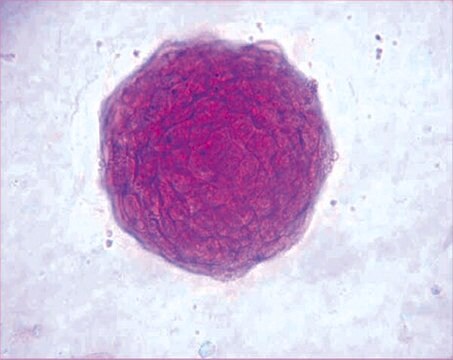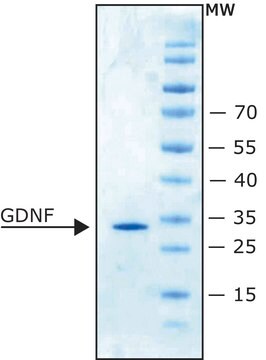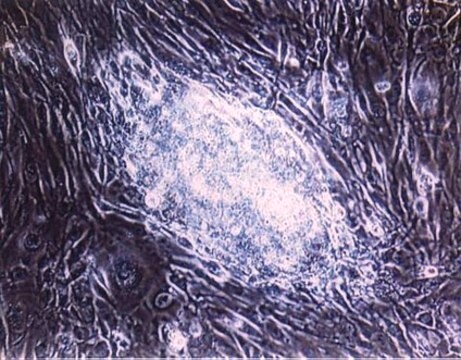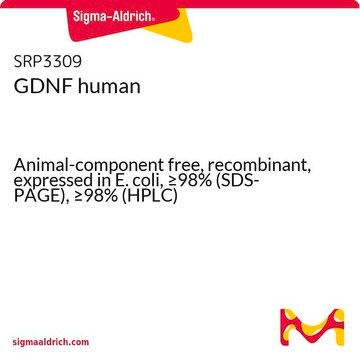L5283
Leukemia Inhibitory Factor human
≥95% (SDS-PAGE), recombinant, expressed in E. coli, buffered aqueous solution, suitable for cell culture
Sinonimo/i:
Human LIF, Human Leukemia Inhibitory Factor, hLIF, LIF, rLIF
About This Item
Prodotti consigliati
Nome del prodotto
Leukemia Inhibitory Factor human, LIF, recombinant, expressed in E. coli, 10 μg/ml, buffered aqueous solution (pH 7.4), suitable for cell culture
Ricombinante
expressed in E. coli
Livello qualitativo
Saggio
≥95% (SDS-PAGE)
Stato
buffered aqueous solution (pH 7.4)
Potenza
0.1-1.5 ng/mL ED50/EC50
Qualità
endotoxin tested
tecniche
cell culture | mammalian: suitable
Temperatura di conservazione
2-8°C
Cerchi prodotti simili? Visita Guida al confronto tra prodotti
Azioni biochim/fisiol
Stato fisico
Risultati analitici
Note legali
Codice della classe di stoccaggio
11 - Combustible Solids
Classe di pericolosità dell'acqua (WGK)
WGK 3
Punto d’infiammabilità (°F)
Not applicable
Punto d’infiammabilità (°C)
Not applicable
Dispositivi di protezione individuale
Eyeshields, Gloves, type N95 (US)
Scegli una delle versioni più recenti:
Possiedi già questo prodotto?
I documenti relativi ai prodotti acquistati recentemente sono disponibili nell’Archivio dei documenti.
I clienti hanno visto anche
Articoli
Naive pluripotent stem cells are located within the epiblast of mature blastocysts. These primitive “ground-state” cells may be cultured in vitro using specialized media and small molecule inhibitors.
Il team dei nostri ricercatori vanta grande esperienza in tutte le aree della ricerca quali Life Science, scienza dei materiali, sintesi chimica, cromatografia, discipline analitiche, ecc..
Contatta l'Assistenza Tecnica.
